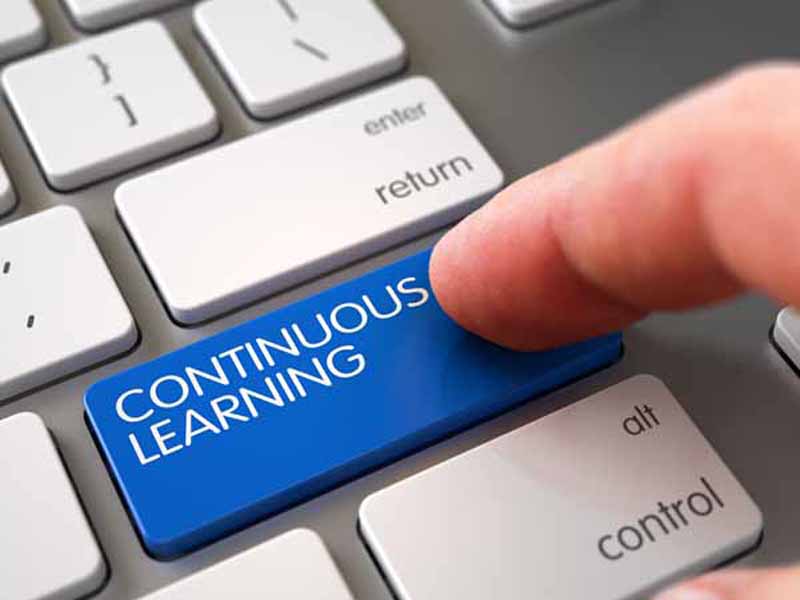Learn to Conquer Your EHR System During 'Happy Hour'
July 10, 2019, 11:44 am Sheri Porter – Many family physicians across this wide country have a love/hate relationship with their EHR systems. Part of the problem is lack of time to train properly and learn the ins and outs of these complicated systems, also known as electronic medical record systems, that are constantly being upgraded.
A short item in the July/August issue of Annals of Family Medicine offers a solution and gives a whole new connotation to the term "happy hour."
Placed appropriately in the "Innovations in Primary Care" section of the journal, the article, titled "EMR Happy Hour: New Approach to Electronic Medical Record Continuous Learning," describes peer-to-peer learning sessions where best practices are shared among physicians.
The one-hour monthly sessions described in the article started in February 2015 at Family Medicine at MU Health Care in Columbia, Mo. They have since been expanded to include other clinical departments, said corresponding author Margaret Day, M.D., M.S.P.H., an associate professor in the Department of Family and Community Medicine at MU Health Care, a 60-faculty academic department at the University of Missouri.
Story Highlights
An EMR "half hour" also has been added to resident didactic sessions.
"Our facility struggles with the same EHR frustrations that are well documented in other places," Day told AAFP News. She and her colleagues who launched the project felt strongly that providing ongoing EHR learning for existing users "was important in helping colleagues feel fewer day-to-day frustrations with EHR use."
Day said they began by sorting EHR "pain points" into three categories that she described as
- actions that could be taught quickly or made simpler with peer-to-peer interactions,
- problems that could be fixed by software engineers, and
- issues that required vendor attention.
"We learned the first category of concerns was large, and we needed an avenue to teach existing users what the EHR was already capable of doing," said Day.
And just like that, the happy hour was born.
"Even saving a few clicks per patient -- or a few minutes per clinic session -- really adds up and is quite impactful for physician well-being," Day added.
Making It Work
Session topics are chosen deliberately and include acquiring new skills in chart review, ordering and documentation. Many sessions have been devoted to reducing the documentation burden, the authors noted.
Session facilitators include a member of the EHR training staff and as many as three clinical faculty members, depending on the number of participants attending, which ranges from three to 10. Organizers aim for a one-to-three teacher/student ratio.
"When attendees describe difficulties with an aspect of EMR use, we can witness their actions, allowing us to explain, coach at the elbow, reconfigure their preferences or diagnose a system problem," wrote the authors.
And when system issues are identified, the facilitators take care of reporting the problem to the help desk.
The happy hour agenda is always flexible and based on participants' experiences and needs; everyone is encouraged to share something they've learned with a colleague who was unable to attend.
Notably, the authors said that everyone engaged in these happy hour experiences -- participants and facilitators alike -- continually learn from one another.
Positive Feedback
Participant comments indicate that the program's developers have hit the mark. Authors learned through surveys that physicians particularly value the peer support approach because it leaves them "feeling less isolated while learning alongside others who share their plight."
Participants described the sessions as "collegial" and an "excellent opportunity to learn new EMR tricks, workarounds, strategies to make life easier."
The authors noted that it's good for attendees to see that the inefficiencies they encounter are most often attributable to "the tool or the system or the workflow" and not the physician using the EHR.
Day put it this way: "EMR happy hours serve as a tool to counteract common burnout factors like lack of perceived control over one's work, work-life imbalance and lack of social support."
She added that the happy hour concept fosters collegiality and the development of a social support network.
"It serves as a place to bring frustrations and to get a resolution, or sometimes just a reassurance in self-efficacy that the tool is not optimal, but you are using it just as well as everyone else."
Day added that she is motivated to find "the small wins -- a timesaver here or a more satisfying way to document there -- that empower physicians and maybe even get them home in time for dinner."
